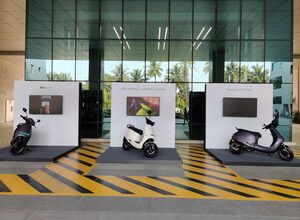New investments in semiconductor chips will remain in Asia but moving away from China: Moody’s Analytics
Chennai, Feb 29 (IANS) Even though new investments in the semiconductor industry seem to be moving away from China, electronics production will continue to remain in Asia for the foreseeable future, said Moody’s Analytics in a report.
According to Moody’s Analytics, all the world’s advanced chip production happens in Taiwan and South Korea, while the US and Europe each produce less than 10 per cent of the global chip supply.
“Asia’s leadership in chips has had certain advantages. Centralising chip production among a few large companies has led to enormous economies of scale and created a regional supply chain that caters to the industry’s needs. Whereas Taiwanese and South Korean tech giants such as Taiwan Semiconductor Manufacturing Co. or Samsung Electronics Co. specialise in high-end semiconductors, manufacturers in Southeast Asia supply legacy chips – less advanced but highly efficient chips used in cars through to consumer appliances and defence equipment,” the report notes.
Japanese companies tend to specialise in providing materials and equipment such as specialised chemicals and machinery used in the production of semiconductors.
According to Moody’s Analytics, Asia’s tech dominance also has downsides.
For instance, electronics play such an outsize role in Taiwan’s economy that its trade and output figures overlap nearly perfectly with the ups and downs of global semiconductor billings. When chips do well, so does the Taiwanese economy; but when chips do poorly, so too does the Taiwanese economy.
Surging demand for global electronics meant Taiwan was one of the only economies in the world to avoid a recession during the Covid-19 pandemic. But when electronics demand slumped after the pandemic, so did the fortunes of Taiwan’s tech giants. Its economy weakened and wage growth slipped behind the rate of inflation – a key issue in Taiwan’s recent presidential election, the report said.
Now countries are also increasingly uneasy about industry concentration. The risks associated with having most of the world’s leading-edge chips made in an economy lacking clear international status (Taiwan is viewed as a breakaway province by the People’s Republic of China) is not lost on policymakers.
Indeed, this is why many governments have in recent years sought to re-shore chip production and safeguard key technologies against Chinese influence.
The US, Japanese, and European governments plan to increase their share of global chip production and are offering substantial subsidies to lure chip-makers to their shores. The US has also worked with The Netherlands and Japan to restrict exports to China of chip-making tools such as lithography machines made by Dutch firm ASML Holding N.V.
Pandemic-era chip shortages and China’s ambitions to expand homegrown semiconductor production have added urgency to these efforts, Moody’s Analytics said. But manufacturers seem in no rush to return to Western shores.
Analysis of the Orbis Crossborder Investment database, which tracks company-reported gross foreign direct investment, shows a decline in the number of electronics-related investment projects completed over the last three years compared with the three years before the pandemic.
But capital expenditure involved has jumped during the same period. The results vary by economy.
For ASEAN economies, especially Vietnam, Malaysia, and Singapore, the number of projects and the capex value have increased. The opposite is the case in China.
Data for the US and Western Europe are more ambiguous – project count has declined, but capex amounts have increased, Moody’s Analytics said.
Several factors will keep chip and electronics production in Asia for the foreseeable future. Asia’s supply chain offers a significant geographical advantage that would be challenging for other regions to replicate.
Easy access to massive chip production capacity, materials, and chip-making equipment provides Asian manufacturers with a crucial edge.
Having end consumers, from carmakers to producers of consumer electronics, right next door also helps.
Asian economies are attractive for other reasons, too, including favourable exchange rates. In particular, the yen has depreciated more than 40 per cent over the past three years, making Japan an affordable production base.
–IANS
vj/vd




